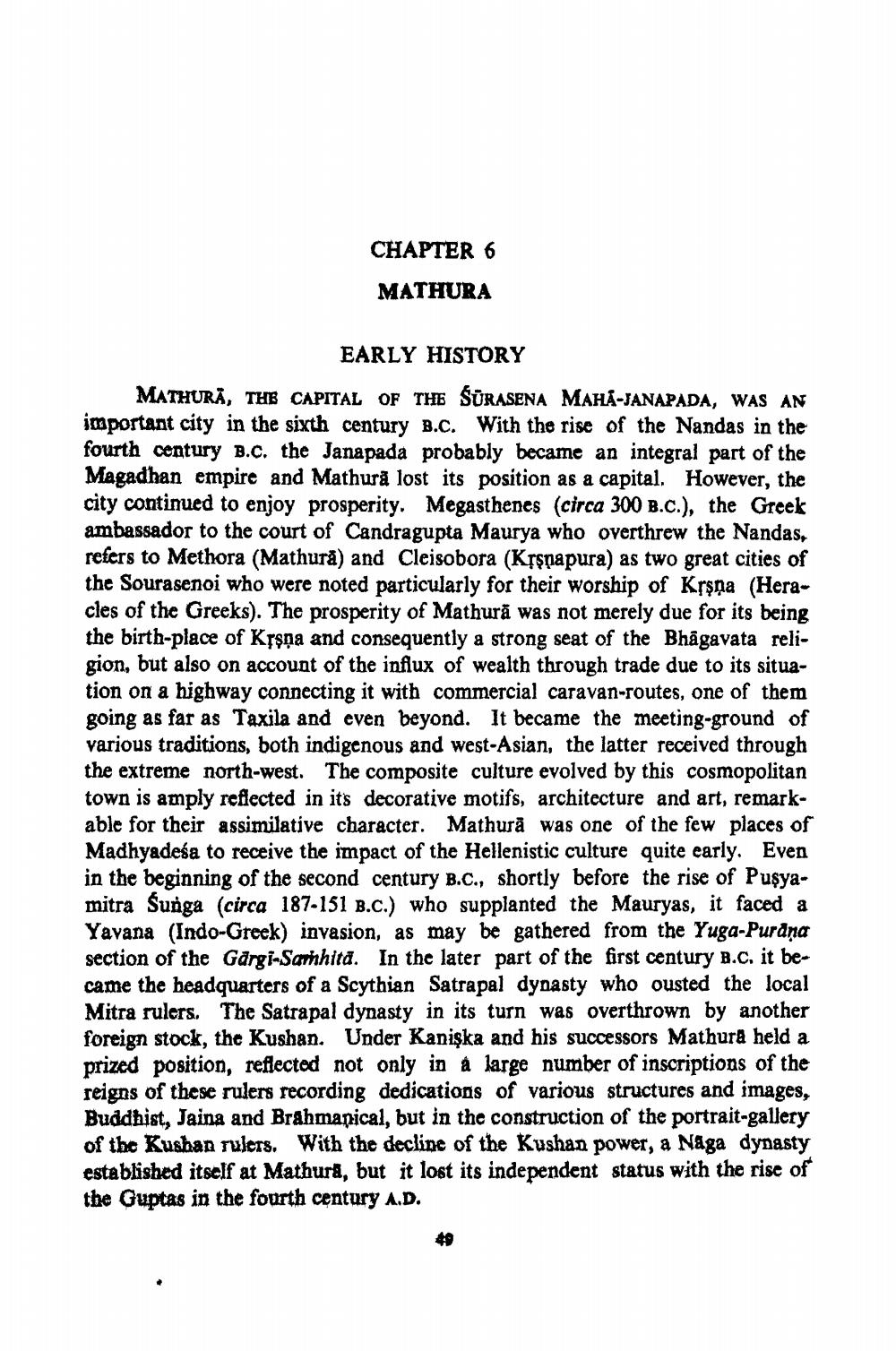________________
CHAPTER 6 MATHURA
EARLY HISTORY
MATHURĀ, THE CAPITAL OF THE SŪRASENA MAHA-JANAPADA, WAS AN important city in the sixth century B.C. With the rise of the Nandas in the fourth century B.C. the Janapada probably became an integral part of the Magadhan empire and Mathura lost its position as a capital. However, the city continued to enjoy prosperity. Megasthenes (circa 300 B.C.), the Greek ambassador to the court of Candragupta Maurya who overthrew the Nandas, refers to Methora (Mathura) and Cleisobora (Krşpapura) as two great cities of the Sourasenoi who were noted particularly for their worship of Krşņa (Heracles of the Greeks). The prosperity of Mathură was not merely due for its being the birth-place of Kyşņa and consequently a strong seat of the Bhāgavata religion, but also on account of the influx of wealth through trade due to tion on a highway connecting it with commercial caravan-routes, one of them going as far as Taxila and even beyond. It became the meeting-ground of various traditions, both indigenous and west-Asian, the latter received through the extreme north-west. The composite culture evolved by this cosmopolitan town is amply reflected in its decorative motifs, architecture and art, remarkable for their assimilative character. Mathură was one of the few places of Madhyadesa to receive the impact of the Hellenistic culture quite ea in the beginning of the second century B.C., shortly before the rise of Pusyamitra Sunga (circa 187-151 B.C.) who supplanted the Mauryas, it faced a Yavana (Indo-Greek) invasion, as may be gathered from the Yuga-Purdņa section of the Gärgi-Samhita. In the later part of the first century B.c. it became the headquarters of a Scythian Satrapal dynasty who ousted the local Mitra rulers, The Satrapal dynasty in its turn was overthrown by another
stock, the Kushan. Under Kaniska and his successors Mathura held a prized position, reflected not only in a large number of inscriptions of the reigns of these rulers recording dedications of various structures and images, Buddhist, Jaina and Brahmapical, but in the construction of the portrait-gallery of the Kushan rulers. With the decline of the Kushan power, a Naga dynasty established itself at Mathura, but it lost its independent status with the rise of the Guptas in the fourth century A.D.




